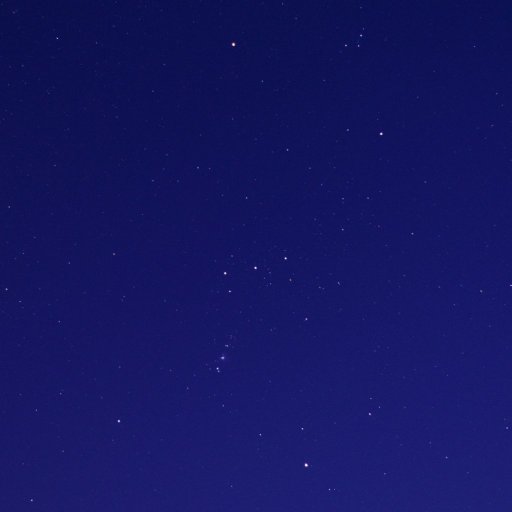« Swiss Post meets South Park | Main | Reading List: Môlon Labé »
Monday, March 21, 2011
Equinoctial Orion in the Blue Sky of Twilight

Click image to enlarge.
The constellation Orion shines through the blue sky of twilight, captured at 18:39 UTC (19:39 local time) on 2011-03-21 from Fourmilab. The photo was taken with a Leica M9 camera with a Leica Summicron-M 35 mm ASPH. lens at f/2 and a shutter speed of 8 seconds with ISO 160 sensitivity. The sky was noticeably blue to the unaided eye; I have adjusted the contrast here to approximate its appearance. Notice how the sky subtly brightens toward the horizon. The Summicron 35 mm ASPH. is, arguably, the finest lens of its aperture and focal length ever manufactured. In normal photographic applications it is frighteningly sharp, and it is tiny and light; it is not inexpensive, but with optics, you get what you pay for, and unlike digital camera bodies, what you paid for will, unless you abuse it, produce just as fine pictures fifty years from now. Astrophotography, with its bright point sources of stars and dark background, is exquisitely revelatory of even the slightest flaws in optics. You'd never notice it in everyday photography, but the Summicron 35 has substantial coma in the corners wide open at f/2 and, in addition, some residual colour around the distorted star images. None of these flaws are evident in this wide angle rendering of an entire constellation, which was cropped from a larger image in which the artefacts are visible only in the corners. I'm sure that if you stop down the lens a bit the quality in the corners will improve dramatically, but astronomers are always hungry for light and prone to using their light buckets at full capacity. The faster Leica lenses are worse at the larger apertures they provide.Posted at March 21, 2011 20:32